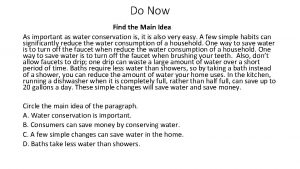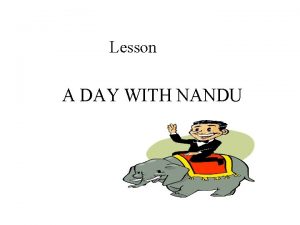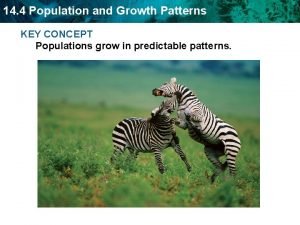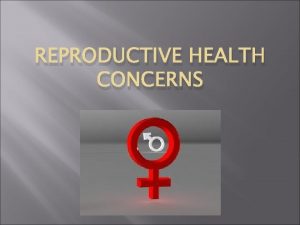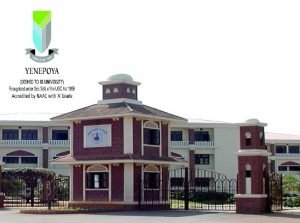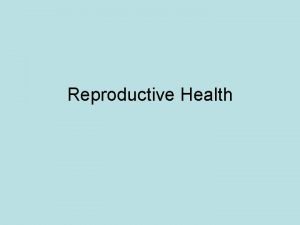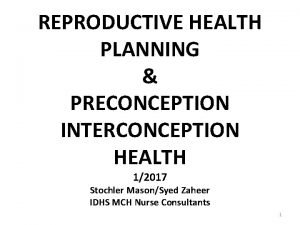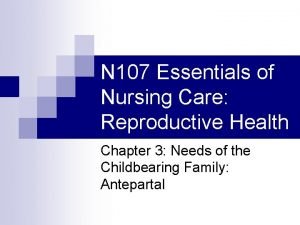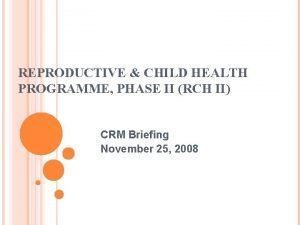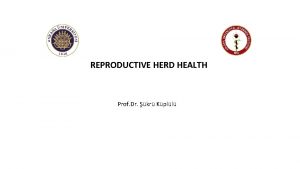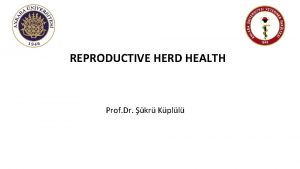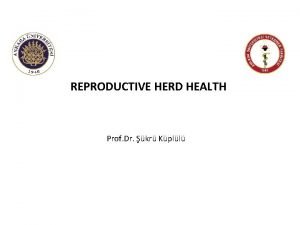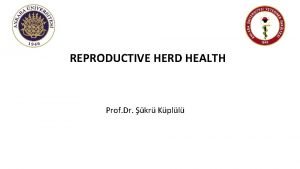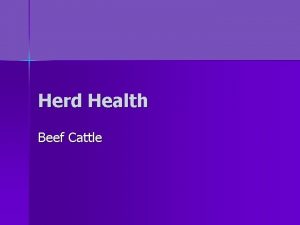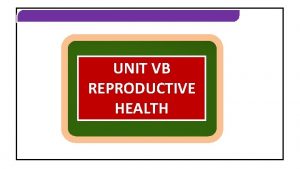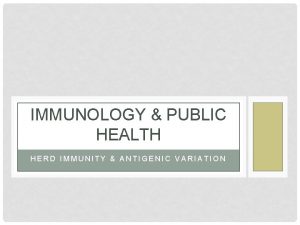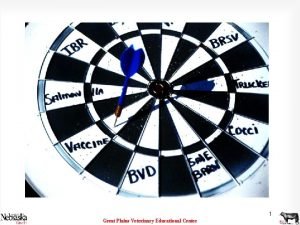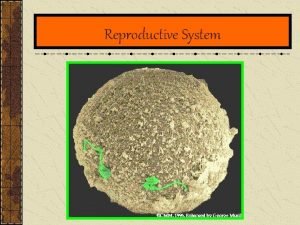REPRODUCTIVE HERD HEALTH Prof Dr kr Kpll MANAGEMENT

















- Slides: 17

REPRODUCTIVE HERD HEALTH Prof. Dr. Şükrü Küplülü

MANAGEMENT OF POSTPARTUM PERIOD

Postpartum Disorders • Diseases of the uterus • Udder Inf. • Metabolic and • functional problems • lameness (Peter ve ark. , 2017)

Postpartum Disorders (Sundrum, 2015; Leblanc, 2014; Van saun, Sniffen, 2014)

Postpartum Disorders/ Energy Balance FAT NEFA LIVER o BHBA o Ac. Ac o Aseton (Cockcroft, 2015; Anonim, 2017) 5

(Overton, 2013; Henderson ve ark. , 2016; Riberio ve ark. , 2016) SICK Healthy Gebelik (32. gün) % Postpartum Disorders 6

Postpartum Disorders AVERAGE INCIDENCE(%) 2, 7 -11, 6 6, 5 DAYS SEEN (Postpartum) Aim First 3 d <%2 %1 0, 66 -2, 9 8, 6 İlk 2 gün İlk 3 gün - <%4 Udder edema %97 Metritis Mastitis Ketosis Disp. Abm 10, 1 14, 2 4, 8 5 Prepartum 1 postpartum 3 weeks First 15 days - First 15 days <%5 First 3 weeks <%1 First 15 days <%1 Laminitis Ovarian Cysts 7 23, 3 First 30 days First 9 weeks Dystocia Clinical Hypocalcemia Prolapsus uteri Ret sec <%2

Postpartum Management 1. Birth in a hygienic environment 2. Pp. first ovulation (Rectal p. + USG) * Initial examination 21 -28. g 3. (CL + PGF 2 a, preferably pp, Gn. RH injection on day 14) * The second inspection is done after 20 days 4. (CL +, uterus appropriate, PGF 2 a and seeding or ovosynch. Protocol)

Postpartum Uterus Involution Curve (Nokes, 2009; Anonim 26, 2017)

Pp. uterine involution and control of uterine infections Early puerperal infections Parenteral antibiotics Fluid therapy Anti-histaminics Supportive treatments (NSAI, etc. ) Stimulation of uterine involution (PGF 2 a)

Pp. uterine involution and control of uterine infections Postpartum after 30 days Intrauterine antiseptics: A- Lugol B- Lotagen Intrauterine antibiotics: * Effective in anaerobic environment, broad spectrum * DMSO + Antibiotic combination (Rifamycin) Other Methods: * Endometrial curettage * PGF 2 -alpha x PGF 2 -alpha * Eosinophilic culture

Case Based Approaches anoestrus Note: Sub oestrus must be distinguished from persistent CL cases, oestrus observation cannot be performed correctly Post partum prolongs the process Palpation (10 days apart): Ovarium surfaces smooth, no structure Serum P 4 (twice a week) <1 ng / ml

ANOSTRUS TREATMENT • Correct the feeding (LH) • Eliminate calf effect • The presence of bulls in the environment (pheromone) • Hormonal interference (Gn. RH, Progestagen + Gn. RH combi)

Subostrus • No oestrus symptoms • Palpation has Luteal Structure • USG has “luteal structure” and “Dominant follicle” • Hormonal interference • (Synchronization of ovulation: Gn. RH + PGF 2 a + Progestagen combination)

Genuine Anoestrus • Ovarian activated due to failure of luteolitic mechanism • Treatment: Operation of luteolitic mechanism • Intrauterine antibiotic, antiseptic administration • Hormonal interference • (Single PGF 2 a or Ovulation synchronization)

Ovarian Cysts • Follicular or Luteal • Gn. RH + PGF 2? • Gn. RH + PGF 2 + P • h. CG • Spontaneous? • etiology (pp first 35 d) Küplülü ve ark. ; 2007

Postpartum Ovarian Activity (Sheldon Ve Ark. , 2011)
 Summary of a herd of elephant flies
Summary of a herd of elephant flies An elephant herd has mainly female and baby elephant
An elephant herd has mainly female and baby elephant Herd
Herd Herd learning
Herd learning Acnc governance standard 3
Acnc governance standard 3 What is the movement of a single caribou into a herd
What is the movement of a single caribou into a herd Inguinal
Inguinal Definition of rch
Definition of rch Reproductive health meaning
Reproductive health meaning Reproductive health definition
Reproductive health definition Height of fundus during pregnancy
Height of fundus during pregnancy Rch programme 2
Rch programme 2 Sexually transmitted diseases
Sexually transmitted diseases Pyramid levels of management
Pyramid levels of management Management pyramid
Management pyramid Middle level management
Middle level management Role of community health nurse in occupational health
Role of community health nurse in occupational health National health intervention programme for mother and child
National health intervention programme for mother and child
